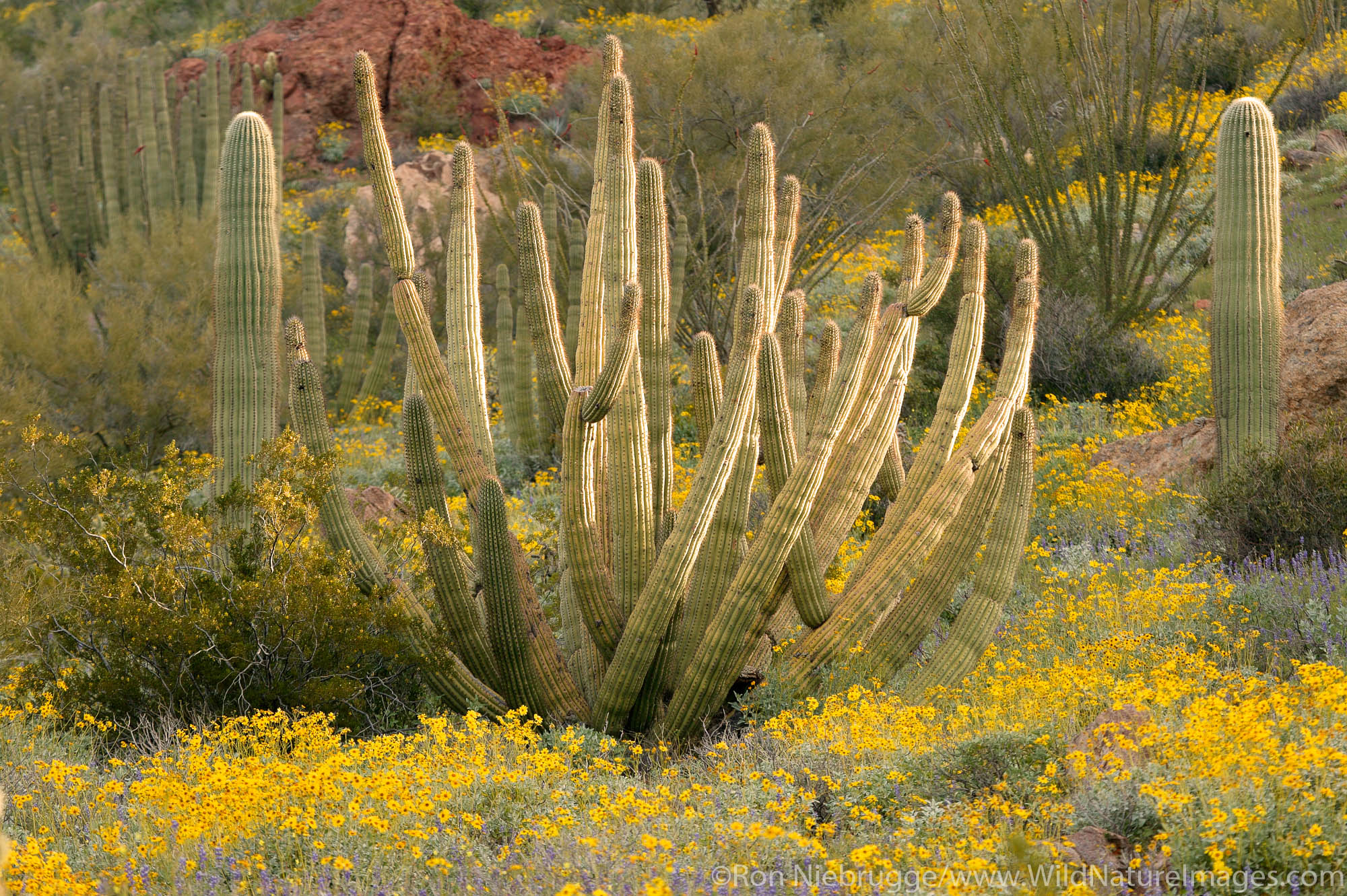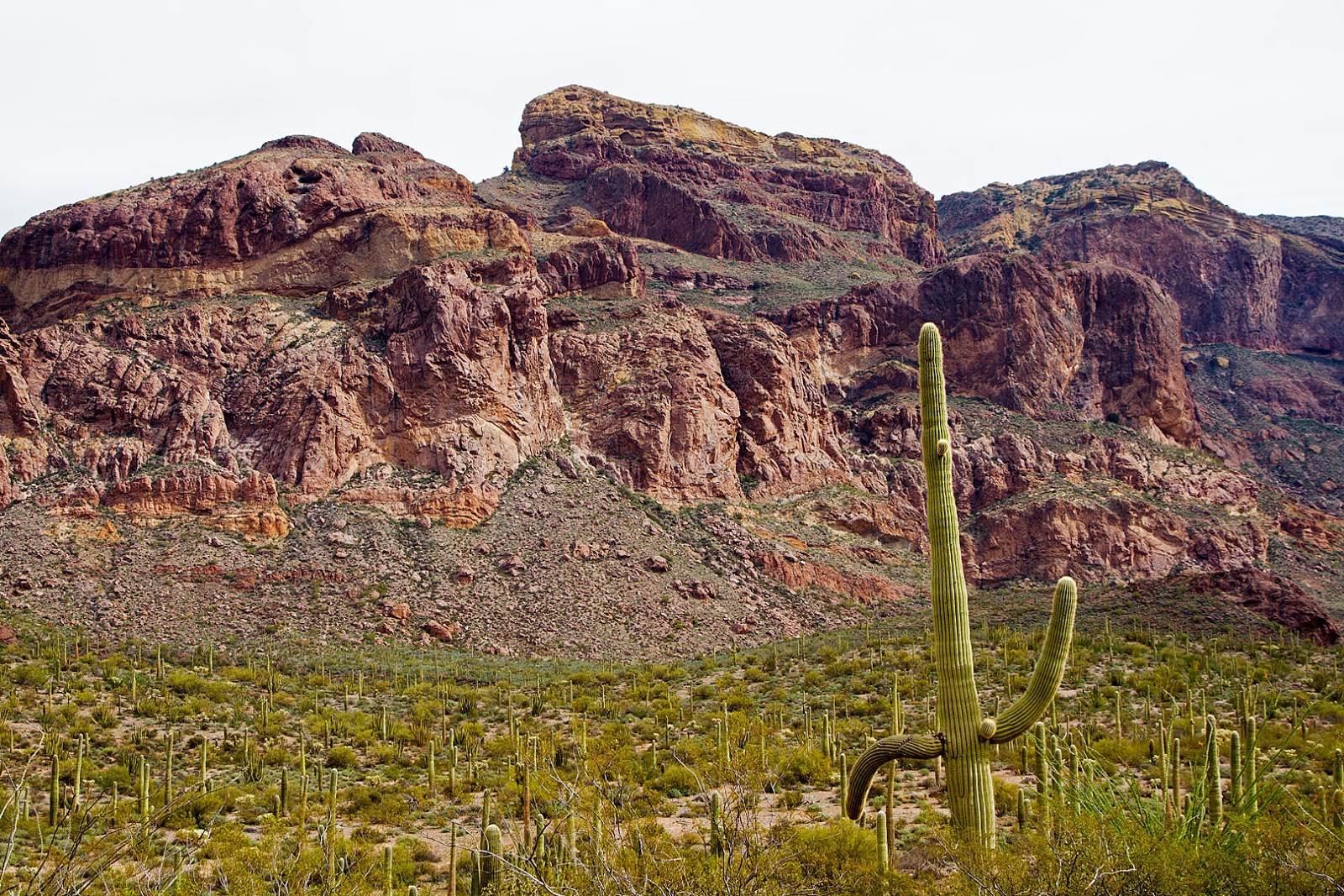


Spend the day on a leisurely drive along 37-mile Puerto Blanco Drive as it winds its way around the Puerto Blanco Mountains and parallels the U.S.-Mexico border. Otherwise, there are plenty of sites that can be reserved in advance at the park’s developed Twin Peaks Campground, next to the visitors center. The sites are first come, first served, so you may want to claim your campsite before tackling Ajo Mountain Drive. At sunset, the cliffs of the Ajo Range glow pink and orange. If you can snag one of the four campsites at Alamo Campground, pitch your tent for the night at this primitive site, which is north of park headquarters and 3 miles east of SR 85. Once you’re back at the car, continue driving southwest, into desert basins flanked by the Diablo Mountains, until you return to park headquarters. And on the way down through Estes Canyon, there are a lot of wildlife and birding opportunities.” “It is a bit of a strenuous climb, but you are rewarded with incredible views of Mexico’s Cubabi Mountains and Mount Ajo. The loop then circles back through the riparian oasis of Estes Canyon.

The roughly 4-mile (round-trip) route climbs 900 feet up to the grassy Bull Pasture Saddle, where ranchers once grazed their cattle. Ceballos recommends the Bull Pasture loop route as the best hike in the park. The picnic area at the trailhead is a scenic lunch spot.Ĭontinuing on the drive, the road loops back to the south and soon reaches the Estes Canyon-Bull Pasture Trailhead. Scramble up the 1-mile path that leads to the entrance of the narrow canyon, where there are two natural arches: a 90-foot-wide span, and a smaller arch on top of it. Located around the halfway point of the drive, this is a great place to stretch your legs. The road twists its way up to the base of the sheer rhyolite cliffs and the Arch Canyon Trailhead. Dead ahead are the jagged volcanic cliffs of the Ajo Range and 4,800-foot Mount Ajo. “It showcases so many different plants and takes you way up into the mountains with amazing views into Mexico and of organ pipe stands.”įrom park headquarters, make your way northeast on the one-way loop through cactus-studded basins, with Tillotson Peak on your left. “This drive is one of my favorite things to do in the park - you get a little bit of everything,” says Karen Ceballos, a ranger at the monument. The drive itself takes about two hours, but you’ll want to allow plenty of extra time for hiking, picnicking and cactus gazing along the way.
#ORGAN PIPE CACTUS NATIONAL MONUMENT FREE#
Pick up a free interpretive guide for the route at the park’s visitors center. Start your Sonoran Desert weekend on the 21-mile Ajo Mountain Drive, a graded loop road east of State Route 85 that leads into the towering Ajo Range. There also are vast expanses of saguaros and rarer senita cactuses. Within the monument’s 330,000 acres are 31 different cactus species, including the only large stands of organ pipe cactuses in the nation. And in 1976, the park was named an International Biosphere Reserve for its abundance of unique plant life. In 1937, President Franklin Roosevelt established Organ Pipe Cactus National Monument to protect one of the richest Sonoran Desert habitats in the United States. But eventually, the land became treasured for something else: cactuses. When European immigrants ventured into the southwest corner of Arizona Territory in the late 19th century, they considered the Sonoran Desert a barren wasteland and saw little of value except the gold, silver and copper they were seeking.


 0 kommentar(er)
0 kommentar(er)
